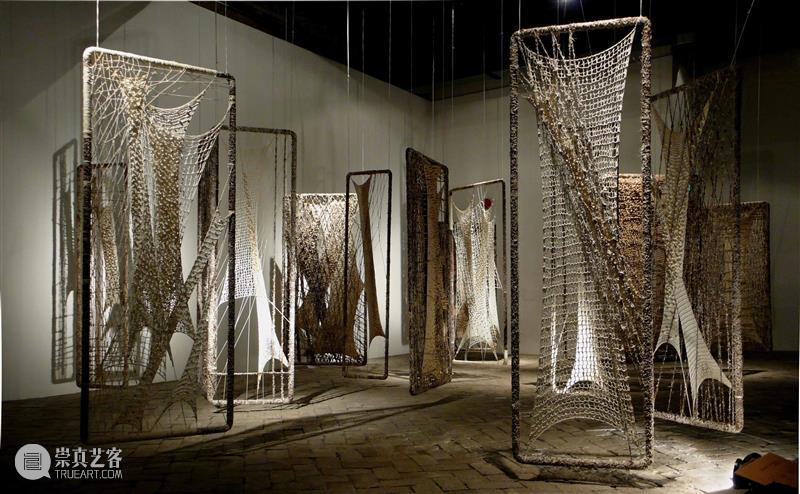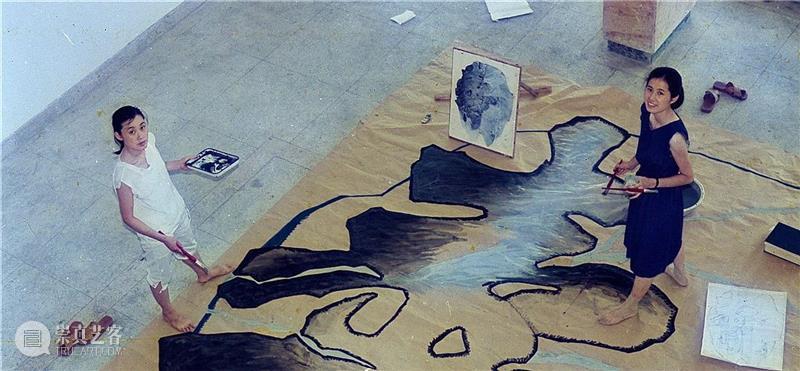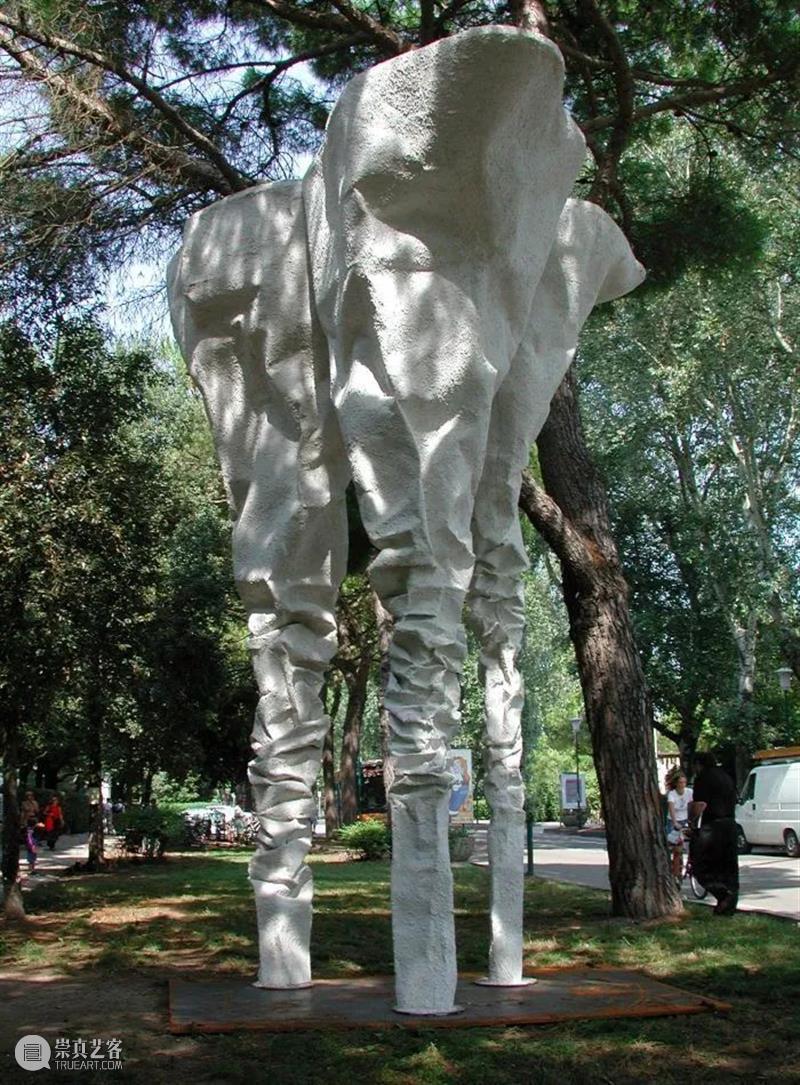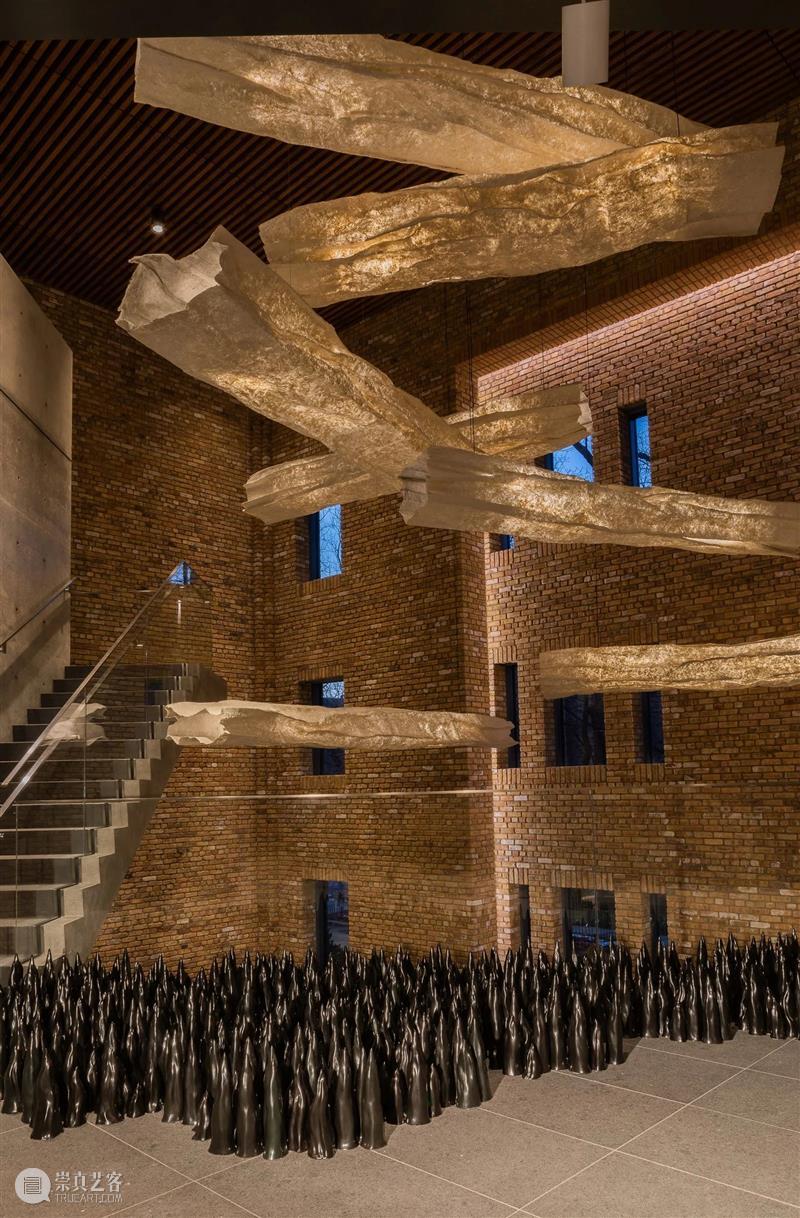
——
Maryn Varbanov 万曼
Shi Hui 施慧

施慧 Shi Hui 图片由艺术家提供 Courtesy of the artist
施慧是1986年第一批跟随保加利亚艺术家万曼在万曼壁挂研究所研习的五名青年艺术家之一。深受万曼先生对壁挂/纤维艺术的耕耘影响,三十多年来,施慧一直在推动着中国纤维艺术的发展。她个人在创作中广泛运用中国传统的棉、麻、宣纸、丝、纸浆等等材料。她的作品体现出她对空间和纹理的关注与蕴含高度感染力的表达形式。
In 1986, Shi Hui was one of the first five artists to work with Bulgarian fiber artist Marin Varbanov (1932–1989) at his new Institute of Art Tapestry at the Zhejiang Academy of Fine Arts (now the China Academy of Art) in Hangzhou. Influenced by his expansive approach to fiber art, Shi has developed a rich body of work over three decades that incorporates materials ranging from cotton, hemp, and silk to wire mesh and paper pulp. Together, Shi, Marin, and others from the Institute catalyzed the rebirth of fiber art in China as an experimental sculptural medium.

《结之四》1998, cotton, coir rope, xuan paper, paper pulp
STRUCTURE-4, 1998 棉线、棕绳、宣纸、纸浆
施慧于1955年出生于上海,现居杭州,中国美术馆学院教授,万曼壁挂研究所主任。1982年毕业于浙江美术学院(今中国美术学院)染织专业,获学士学位。1982—1984年任教于上海轻工业专科学校。1984—1993年在浙江美术学院任讲师,1986年-1989年在“万曼壁挂研究所”研修当代纤维艺术创作。1987年,作品《寿》(合作)参加瑞士洛桑“第十三届国际壁挂双年展”,实现了中国当代壁挂艺术走向世界的零的突破。
Shi received a B.A. from the Zhejiang Academy of Fine Arts (now the China Academy of Art) in 1982. From 1982 to 1984, she taught at Shanghai Light Industry College, and from 1984 to 1993, at her alma mater, where she had the opportunity from 1986 to 1989 to study with Maryn Varbanov at the Institute Art Tapestry Varbanov (IATV). In 1987, her work "Shou" (cooperation) was included in the "13th International Tapestry Biennale" in Lausanne and marked the first presentation in the contemporary Chinese tapestry art in the world-known occasion.

施慧(右)与朱伟制作选送瑞士洛桑“第十三集国际壁挂双年展”作品《寿》
Shi Hui(Right) and Zhu Wei's work SHOU included in"the 13th International Tapestry Biennale" in Lausanne
首先我就想到在材料上面,因为这些材料欧洲艺术家都用了很多,我就觉得如果再用这种材料、这种手法做,总是摆脱不了欧洲的一种模式,那么我就想首先在材料上是不是能够改变一下,所以我就找了宣纸。
I first began to think about the materials of my practice because these materials had already been used widely by European artists. . . . Then, I considered whether I could significantly alter my use of materials, and so I turned to xuan paper.

局部 Details
2006 Fan-1
Wire mesh, xuan paper, paper pulp
2006扇-1
镀锌铁丝网、宣纸、纸浆
施慧是上世纪80年代中国第一批纤维艺术的创作者,她坚持纤维艺术在当代艺术中的创作方向,作品以棉、麻、宣纸、纸浆等纤维材料为特征,在当代艺术的层面上体现出东方精神的底蕴。作品先后参加国内外许多重要展览及提名展、双年展,参加的群展有 2000年第三届上海双年展,2001年德国柏林国家美术馆 “生活在此时——29位中国当代艺术家”展,2003年法国蓬皮杜艺术中心“间”——中国当代艺术展,2013年德国科布伦茨路德维希博物馆双个展。
Shi Hui was among the first generation of Chinese artists working in contemporary textile art in 1980s. Specially focused on the fiber art, Shi relentlessly incorporates materials ranging from cotton, hemp, rice paper to silk, mesh and paper pulp in her compositions that at once imbued with Chinese tradition. Her works have been featured in numerous exhibition worldwide, most recently including The 3rd Shanghai Biennial(Shanghai, 2020), Living in time: 29 contemporary Chinese artists from China at Berlin’s National Gallery(Hamburger Bahnhof, Berlin, 2001), Alors, La Chine at Centre Pompidou(Paris, 2003) and Flourish Spirits at Ludwig Museum(Koblenz, 2013). She has also been awarded as the 2007 “Martell Artists of the Year” and the 8th Award of Art China in 2014.

2006 Fan-2
Wire mesh, xuan paper, paper pulp, 140X112X7.2cm
《2006 扇-2》 镀锌铁丝网、宣纸、纸浆, 140X112X7.2 厘米
我用写过字的宣纸包起中国的蒲扇,再以编织的方式将其组装。
I wrapped the Chinese Pu fan with writted rice paper and weaved it.
施慧持续使用中国宣纸和纸浆为主要媒介,在这种钟爱的后面,显然既是对媒介与自己心灵默契的那种特殊属性的体认,也是对中国传统媒介在当代的价值转换的信念。施慧的作品在中国当代艺术的图式中,呈现出独特的视觉特征,她将传统意义上的编织拓展为一种视觉空间的建构,编织的过程被作为经验的流程,而成为一种“后现代的万物有灵论”的图像演绎。
Shi relentlessly employs the paper as fibrous material for weaving and sculpting. Her sustained emphasis on the materials reflects a special relationship between the materials and artist her self, revealing the artist’s devotion and belief to the traditional Chinese medium in the contemporaneity. She challenges the conventional notion of the weaving and experiments in the physical space, and that marks her works intricate and dynamic.Through the deft use of warp and weft, Shi’s practice embraces the accumulation of the experience, which visually shows idea of the postmodernism animism.

STRUCTURE 4, 1998
cotton, coir rope, xuan paper, paper pulp, 74x200cm
《结之四》 1998棉线、棕绳、宣纸、纸浆, 74x200厘米
早期施慧作为中国编织艺术的先行者参与国内外展览包括:〈蕴〉参加《中国现代壁挂艺术展览》(1987,上海);《中国现代美术展》(1988,日本岐阜);〈寿〉参加第十三届《洛桑国际壁挂双年展》(1987,瑞士洛桑);〈蓝〉参加 《中国现代壁挂艺术展》(1988,香港);〈梭〉参加《中国壁挂特展》(1989,美国芝加哥湖畔画廊)。
In the late 1980s, Shi’s work was displayed in numerous exhibitions including the ‘Contemporary China Tapestry Exhibition’ (Shanghai, 1987), the ‘Chinese Modern Art’ exhibition (Gifu, Japan, 1988), the 13th Lausanne International Biennale of Tapestry (Lausanne, Switzerland, 1987), the ‘Chinese Modern Tapestry Exhibition’ (Hong Kong, 1988) and the ‘Special Exhibition of Chinese Tapestry’ (Lakeside Gallery, Chicago, USA, 1989).

《融》2001,柏林汉堡火车站美术馆前院
Rong, 2001, installation at Miniatur Wunderland, Berlin
我们在86、87年做展览的时候,万曼先生也非常强调壁挂艺术和现代空间的融合。因为现代空间的变化和自由度跟我们的壁挂作品很配合,后来他称之为软雕塑,软雕塑的形态是一种空间的形态,这跟现代新建筑的一种非常自由的空间形态,再加上和它材质的反差,他觉得是纤维艺术在公共空间当中的重要性,所以万曼先生觉得这是一个非常主要的发展方向。
Back in 1986, when we were doing a show, Maryn Varbanov always emphasized the idea how the tapestry art can be intergrated into the modern space which are versatile and unconstrained that our tapestry works share the similarities with. He later named it "soft sculpture" as its free formative like the modern arch and its special emphasis on the materials. Varbanov valued the long-term importance of the fiber art in the public space.

Float 《飘》, 2000/2007/2013
Wire mesh and xuan paper pulp 镀锌铁丝网,宣纸、纸浆
Dimensions variable 尺寸可变

展览现场《物之魅力——来自中国的材料》芝加哥大学SMART美术馆,2020年
Installaiton view of the Allure of Matter:materials art from China
SMART Museum of Art, the University of Chicago, 2020
我内心觉得我自己跟大自然有这么内在的情感,这可能跟我文革下放到农村的经历有关。
现在年龄大了,再回忆起来,觉得那些时光其实是蛮有意思,很丰富多彩的,我觉得可能那段时间培养出对大自然的情感,因为在农村没有人跟你交谈,一个人独来独往。有时候到一个地方去买煤,挑煤回家, 挑到半路上就在一个山坡上歇一歇,然后自己就在那儿玩。那个时候你跟大自然是一种交流,所以我觉得这种情感可能一直在我的心灵深处,所以我做东西总是想着它在自然当中呈现、和自然结合,呈现出一种很美妙的东西。我觉得很多时候我是以这样的心态在做,使用一些材质、呈现视觉的东西都是跟生命有关的。

展览现场,德国·科布伦茨路德维希博物馆
Installation view at Ludwig Museum (Koblenz,2013)
STRUCTURE V, 2012
Stainless steel plate, stainless steel wire, stainless steel pipe
《结之五》不锈钢板、不锈钢管、不锈钢丝
参照References
1. 未来的材料记录1980-1990 中国当代艺术,访问文字记录,施慧访谈,访问者,杜柏贞,翁子建,2008年11月 www.china1980s.org
Materials of the future: Documenting Contemporary Chinese Art From 1980-1990
2. 《物之魅力-来自中国的材料艺术》展览官网,The Allure of the Matter show page(https://theallureofmatter.org/)
- 如何找到我们-
How to find us

- 关注我们 -
Follow us


已展示全部
更多功能等你开启...





 分享
分享